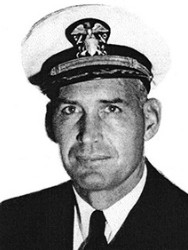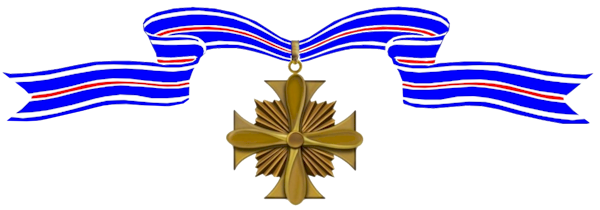William Kane graduated from the U.S. Naval Academy at Annapolis, Class of 1933. During World War II he became a Naval ACE credited with shooting down six enemy aircraft in aerial combat. As a Navy Captain he was killed in the crash of a TV-2 Seastar on February 5, 1957.

–
Cemetery:
Awards Received
-

Navy Cross
-
Navy Cross
Service:
United States NavyRank:
CommanderRegiment:
Air Group 10 (AG-10)Division:
U.S.S. Enterprise (CV-6)Action Date:
June 11 – 25, 1944
Commander Fast Carrier Task Force: Serial 0247 (July 13, 1944)The President of the United States of America takes pleasure in presenting the Navy Cross to Commander William Richard Kane, United States Navy, for extraordinary heroism in operations against the enemy while serving as Pilot of a carrier-based Navy Fighter Plane and Commander of Air Group 10 TEN (AG-10), attached to the U.S.S. ENTERPRISE (CV-6), in action from 11 to 25 June 1944, in action against enemy Japanese forces in the vicinity of the Southern Mariana Islands, from 11 to 25 June 1944. Courageously leading his Air Group on numerous attacks, including fighter sweeps and bombardment missions, against strong enemy installations, Commander Kane inflicted serious and costly damage on enemy airfields, gun emplacements and beach positions, personally destroying one enemy fighter in aerial combat and damaging another. Despite a painful wound incurred when shot down on 16 June, he participated in the First Battle of the Philippine Sea on 20 June, serving as a fighter escort for several planes seeking the location of the main Japanese Fleet and shooting down a single-engined torpedo plane and a twin float aero-reconnaissance plane. Conducting a coordinated strike against the Japanese Fleet, he shot down an intercepting enemy ZERO in the ensuing battle and, directing his fighter planes in strafing dives on the decks of an enemy carrier, reduced the anti-aircraft opposition for his dive bombers and torpedo planes during their attacks which disabled or sunk the enemy vessel. Retiring with his group through darkness to base after this strenuous and protracted engagement, he effected a forced water landing, when unable to land on his carrier. By his brilliant airmanship, courageous initiative and daring leadership, Commander Kane contributed materially to the success of our operations in these historic actions, and his great personal valor in the face of grave peril was in keeping with the highest traditions of the United States Naval Service.


